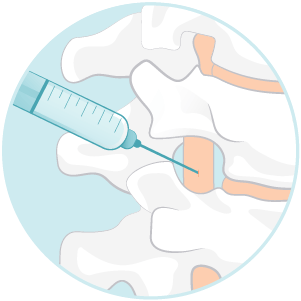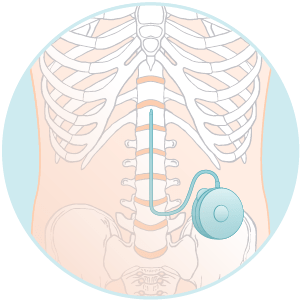Intrathecal Therapies
Overview
Intrathecal drug delivery uses a small pump to deliver medication directly to your spinal cord to relieve chronic pain. The procedure has several advantages over oral pain medications, which must travel through your body on their way to the spine. A “pain pump” allows for smaller doses, and possibly fewer side effects.
The procedure is done in two parts. The first is a trial to determine if a pump would be right for you. Your doctor will inject medication into the spinal area or insert a catheter to allow continuous delivery. If the trial is successful, your doctor may suggest a permanent pump, which is implanted just under the skin of your abdomen, below your waistline.
-

Part 1
During the trial, you will receive an injection of continuous medication. If successful, your doctor may recommend a permanent pump.
-

Part 2
The pump is implanted just below the skin of the abdomen, allowing targeted pain relief in smaller doses with fewer side effects.
Who Benefits?
The procedure can help a range of patients, including those suffering from chronic back and neck pain, cancer-related symptoms, severe spasticity, sciatica, abdominal pain and complex regional pain syndrome.
Are There Different Approaches to This Treatment?
While the general procedure is the same, the medications used may vary based on the underlying cause of the chronic pain.
Recovery Expectations
The procedure, which involves a couple small incisions, may be done in an inpatient or outpatient setting. If a pain pump is installed, it is likely to be done two or three days after the initial trial. Most patients are sent home after the pump is installed, though in some instances an overnight hospital stay for observation may be warranted.
Initially, you may experience some discomfort at the site of the pain pump. You also will be asked to avoid various activities for up to two months after surgery. Those include lifting anything heavier than five pounds, raising your arms over your head, sleeping on your stomach, sitting for long periods or climbing stairs.

